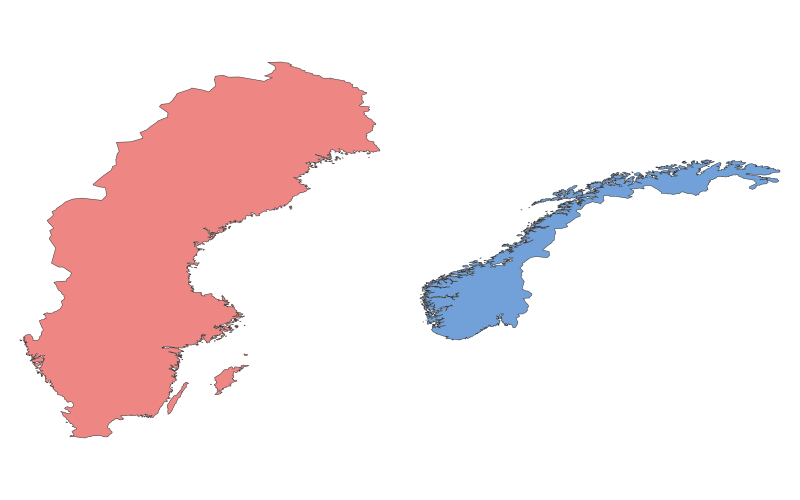Sweden vs. Norway: A Geographical Comparison

Comparison Table
| Category | Sweden | Norway |
|---|---|---|
| Location | Northern Europe, Scandinavian Peninsula | Northern Europe, Scandinavian Peninsula |
| Size | 450,295 km² | 385,207 km² |
| Climate | Temperate in south, subarctic in north | Coastal temperate, colder inland |
| Natural Resources | Iron ore, timber, hydropower | Petroleum, hydropower, fish |
| Urban Development | Stockholm, Gothenburg, Malmö | Oslo, Bergen, Trondheim |
| Transportation | Extensive rail and road networks | Famous for fjords, ferries, and tunnels |
Description
Sweden
Sweden, the largest country in Scandinavia, is known for its vast forests, thousands of lakes, and a highly developed welfare state. Historically, it was a major European power during the 17th century. Culturally, Sweden is famous for its contributions to music (ABBA, Avicii), design (IKEA), and literature (Astrid Lindgren). The economy is export-oriented, with key industries including automotive (Volvo), telecommunications (Ericsson), and pharmaceuticals.
Norway
Norway, renowned for its dramatic fjords and rugged coastline, is one of the most mountainous countries in Europe. It has a rich Viking history and was once part of the Kalmar Union with Sweden and Denmark. Norway's culture emphasizes outdoor activities like skiing and hiking, and it is a global leader in environmental sustainability. The economy is heavily reliant on oil and gas exports, but it also has strong maritime and fishing industries. Norway consistently ranks high in quality of life indices.
Both countries share a deep connection to nature, with strong traditions of outdoor life and environmental conservation. While Sweden has a more diversified economy, Norway's wealth is closely tied to its natural resources. Their geographical similarities and differences make them fascinating neighbors in Scandinavia.